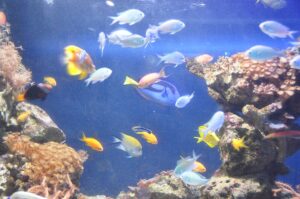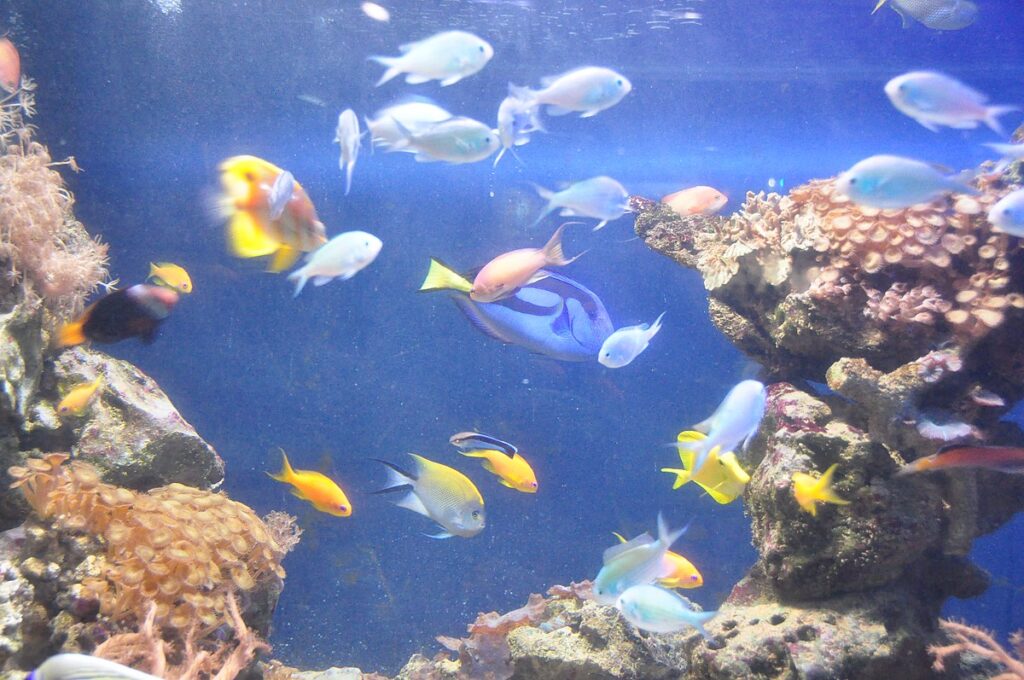Cloudy fish tank? Here are some things to consider that may be making your fish tank cloudy. No matter what type of tank you have or species you keep, these steps will get you back to a healthy tank quicky!

Did you recently add more substrate?
No matter what type of substrate you use in your tank, be it gravel, sand or planting material, ALWAYS rinse it before adding it to your tank. During production, lots of dust can be incorporated into the material and if that gets into your tank, expect a clear tank to become cloudy very quickly. Just a quick rinse in a bucket with some treated tap water will remove a good part of the dust that you don’t want to get into your fish tank.
Is your filtration or water movement stirring up your lighter substrate?
Lighter sand substrate can stay in suspension if there is a lot of heavy water movement. If you are using a light or fine sand, try not to direct any filter outflows or powerheads directly at the bottom of your tank. Try to set filter outflows along the diagonal axis of your tank and have powerheads pushing water up from the bottom or mid-water level.
Are there lots of particulates circulating around your tank?
Floating particulates in fish tanks can be algae, pieces of plant, fish waste, food waste or other small solids that are not removed from your water for some reason or another. These pieces can be so fine, that your filter media does not catch them. If you are struggling with lots of suspended solids, we recommend incorporating a fine mesh filter into your filter media. It will become clogged VERY quickly, so be prepared to clean it multiple times a day.
Most Common Cause of Fish Tank Cloudy Water: Poor Water Quality
The most common cause of a fish tank with cloudy water is poor water quality, specifically, high ammonia levels. High ammonia and the subsequent beneficial bacterial bloom can happen for many reasons in your tank, including:
- Filtration not yet established (“New Tank Syndrome“)
- Too many fish in the tank
- Too much food being fed or wasted
- Not enough filtration
Cloudiness can also be caused by dying bacteria due to a sudden change in their food source or pH shift. This can occur if you have suddenly lost fish, changed their diet or changed your tank maintenance. Testing your water chemistry is the best thing to start diagnosing a cloudy fish tank. Always write down your values so you can check against historical levels!
A sudden change in nitrate or phosphate may cause cloudy water due to an algae die off if you have lots of algae in your tank. You may need a specialty kit to check for these levels if you are not adding them to a coral-specific tank.
4 Steps to Fix Cloudy Fish Tank
- 50% water change – No more than 50% at one time! Always use your water conditioner and gravel siphon (after moving your decor) and make sure the temperature is correct for your species of fishes.
- Add in a fine mesh filter – You should not remove any filter components, but cut to the correct size and add it to your pre-existing filter. You will need to clean it frequently.
- Redirect any filters and outflows – This will help any fine substrate from getting blown around.
- Check and monitor your water quality – Use a liquid-based test kit opened in the last year. Here is our guide to fix poor water quality.
If you continue to have issues with your water quality, you may want to check your source water for any possible contaminants. Running your tap water through a filter (such as a Brita pitcher) can help resolve cloudy fish tank water with poor source water. Ask your fish veterinarian if you have any additional questions or concerns about your cloudy fish tank.

